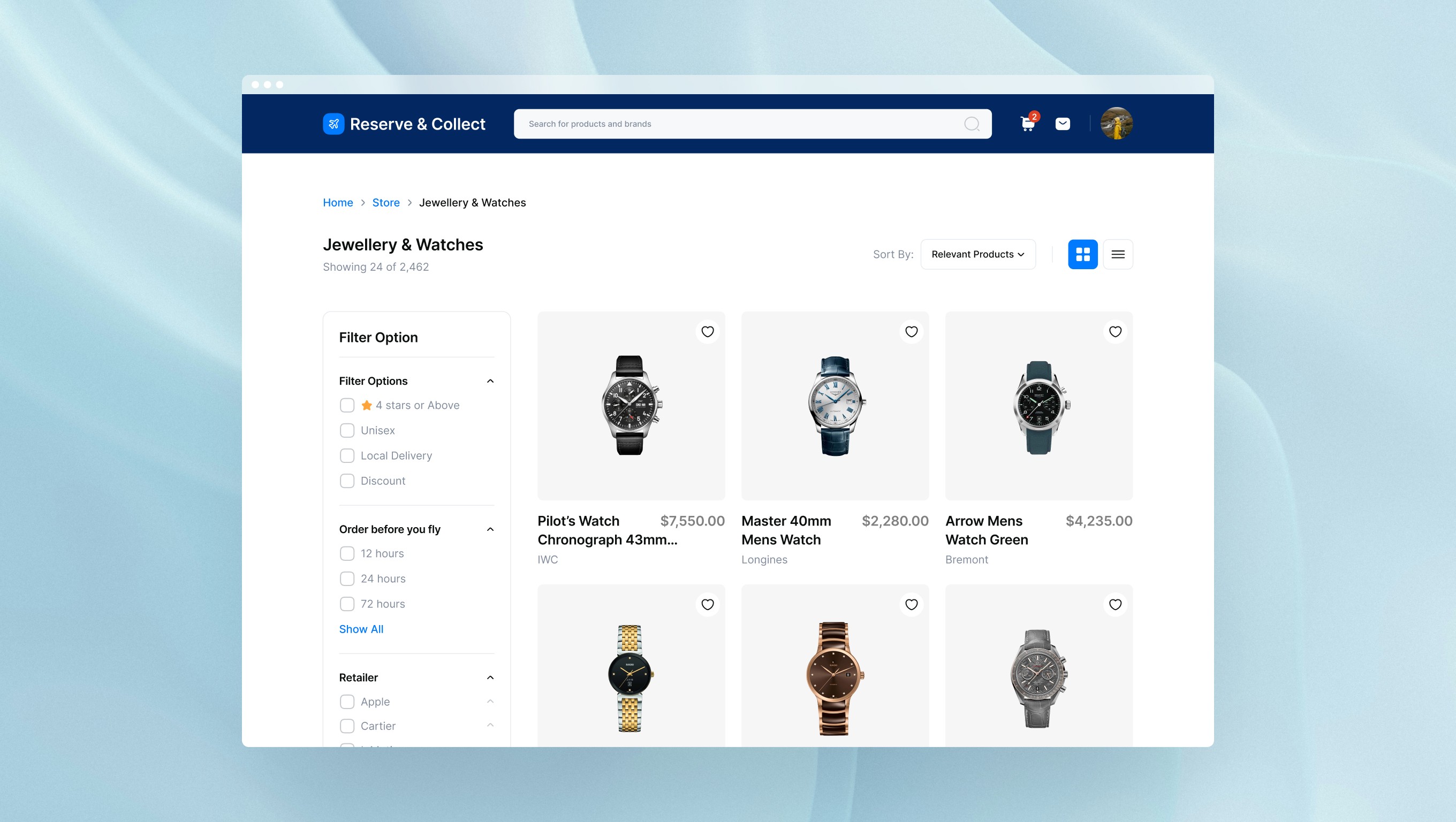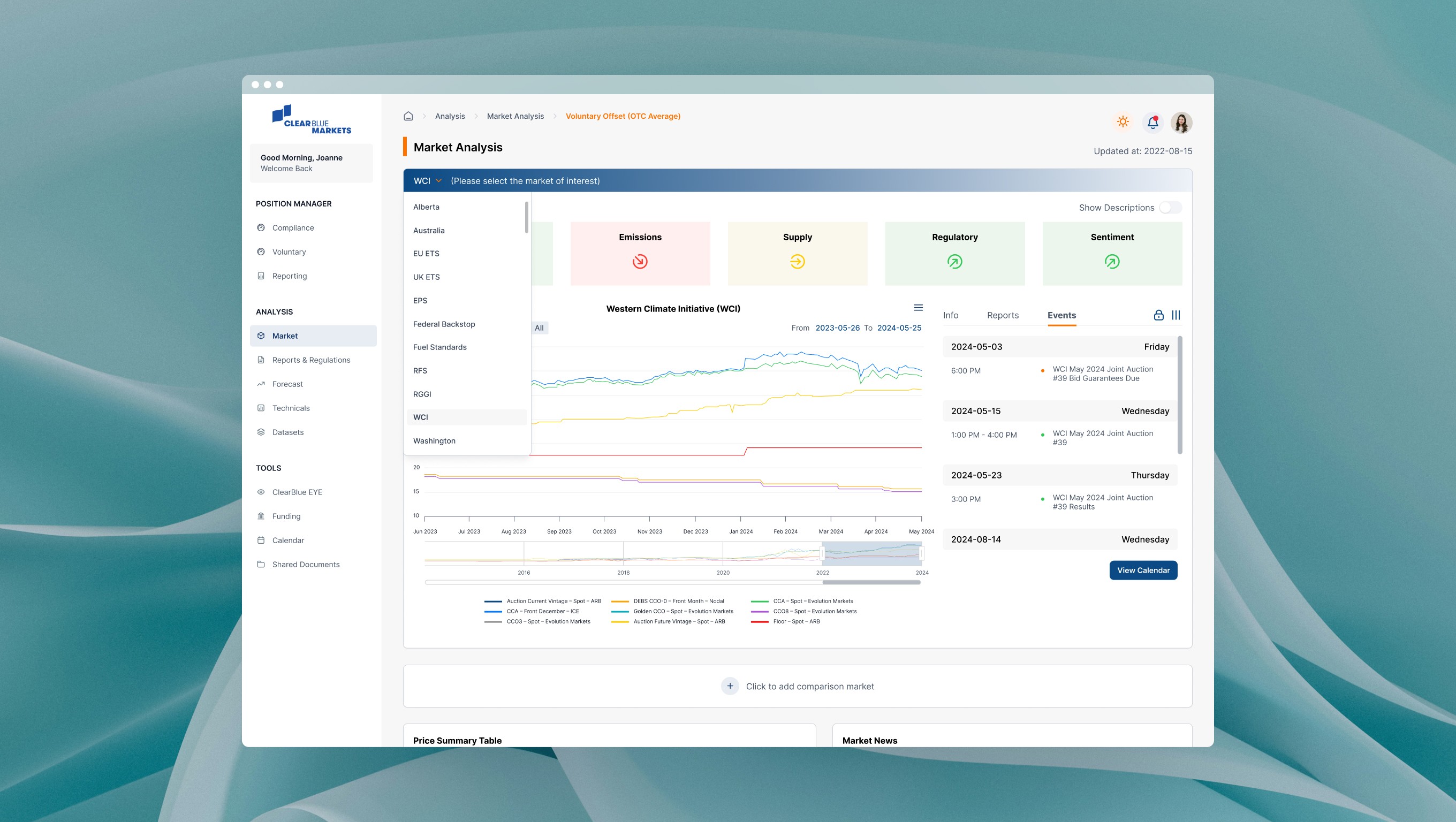Product Strategy, eCommerce
International Airport
In 2023, I supported one of the world's busiest airports in defining the vision for its eCommerce platform. Partnering with a team of functional leads and customer experience consultants, we helped the client clarify where they wanted to take the product, and what it would take to get there.
Role: Customer Experience Consultant (Product Strategist)
Duration: November 2023 – February 2024 (4 months)
Team: Engagement Partner, Project Lead, Functional Lead, 2x Consultants
Skills: Customer Research, Market Analysis, Prioritization, Requirements
I. Overview
Context
The client, a global airport serving millions of passengers annually, aspired to launch a new eCommerce platform to engage customers, establish partnerships, and generate new digitally-enabled revenue streams. This project fell under one of their core mandates of improving the airport's customer experience and modernizing its operations.
The Challenge
Building a marketplace for first- and third-party sellers, designed to host thousands of products and serve millions of global customers, is no small feat. With multiple business units involved, including Retail, Commercial, and Parking, there were conflicting interpretations of the role that eCommerce played at the airport and its desired features/capabilities.
The client needed guidance on scoping an MVP, aligning diverse expectations, and managing the functional requirements of building this offering. As such, I framed the project around the following question:
“How might we design a direct-to-consumer eCommerce offering that enhances the passenger experience while driving revenue for the airport?”
II. My Role
My Approach
Within the product development cycle, our client had already defined the target customers and their underserved needs. Our role was to bridge the gap between the problem and solution space by securing buy-in on the platform's vision and roadmap before moving into prototyping and testing.
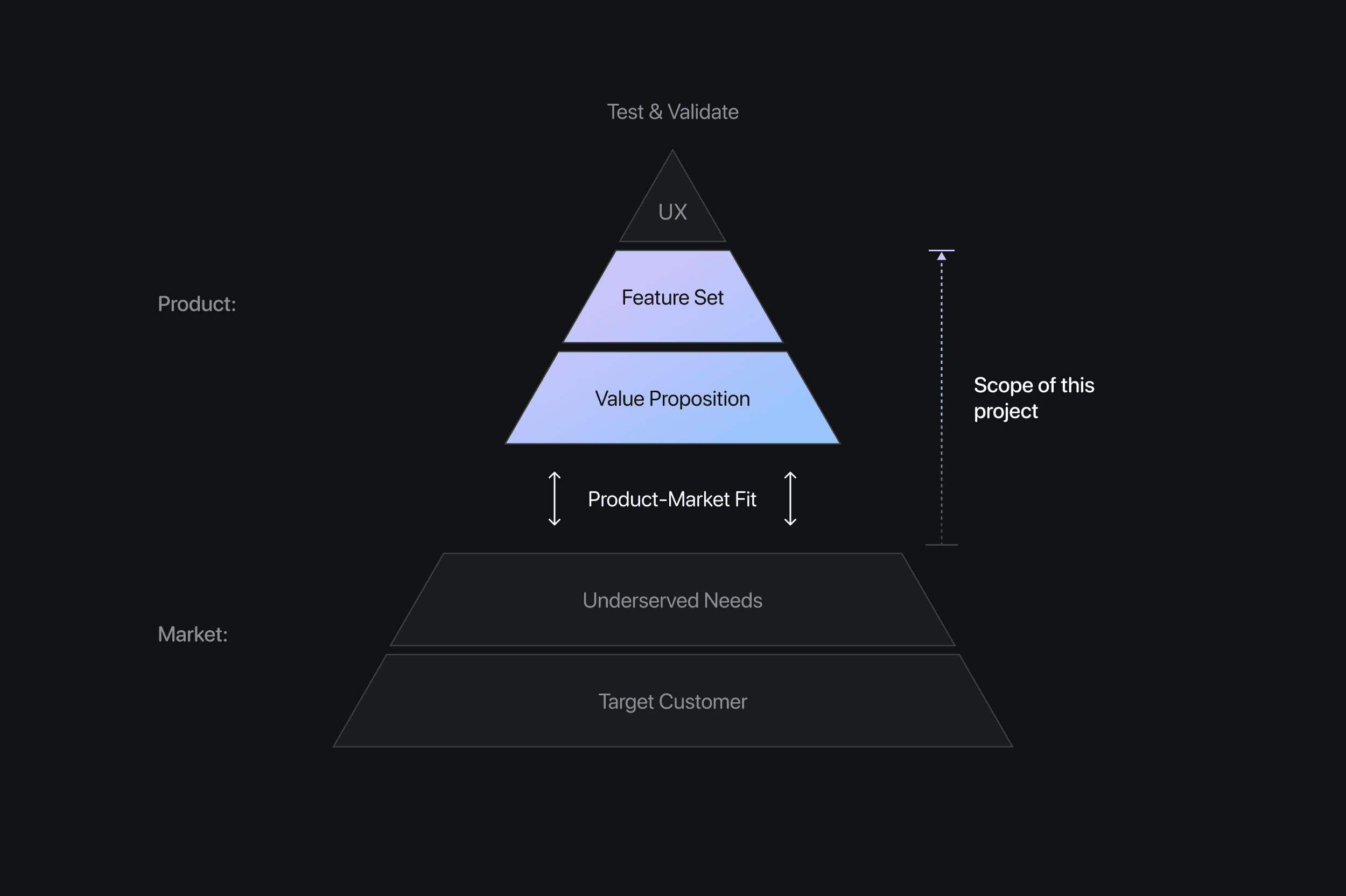
I approached my work with the following mindset:
Framing My Perspective: Given that we were not yet in the build phase of the solution, I was encouraged to think big when exploring the art of the possible. Throughout the project, I positioned the airport's eCommerce experience through the lens of a next-gen digital marketplace rather than a transportation hub. This perspective expanded my analysis into adjacent offerings from the world's top venues, marketplaces, and shopping malls.
Thinking One Layer Deeper: While eCommerce is typically seen as buying something from an online store, there are, in reality, many underlying mechanisms to delivering customer and business value (marketing, content, fulfillment, targeting/retargeting, etc.) To challenge pre-existing assumptions, I dug deep into the mechanisms enabling these experiences to educate the client on the possibilities of eCommerce beyond retail transactions.
My Process
A. Build Context
To better understand the opportunity, I first conducted a market scan of the world's top digital experiences, documenting the factors contributing to their success. These findings gave our team a perspective on the leading practices and table stakes required to launch an eCommerce offering in the airport business.
Next, we used the key themes from our competitive analysis and customer research to develop a strategic narrative on the eCommerce opportunities available to the client. My work in this phase helped build conviction that our recommendations were grounded on industry-proven strategies.

B. Design and Validate
I came out of the context phase with a comprehensive list of potential features for the eCommerce platform. However, before presenting these ideas, we needed to structure them in a way that would spark further discussion and brainstorming (aka, "the art of client facilitation").
To accomplish this, I designed an end-to-end journey map to visually highlight all of the possible touchpoints that digital commerce could enable/enhance at the airport. We then validated the flow through an executive workshop, where the client provided input into their desired features and clarified where there were distinctions between services. For instance, a configuration that could support booking parking tickets would not be extensible to buying duty-free items in the terminal.
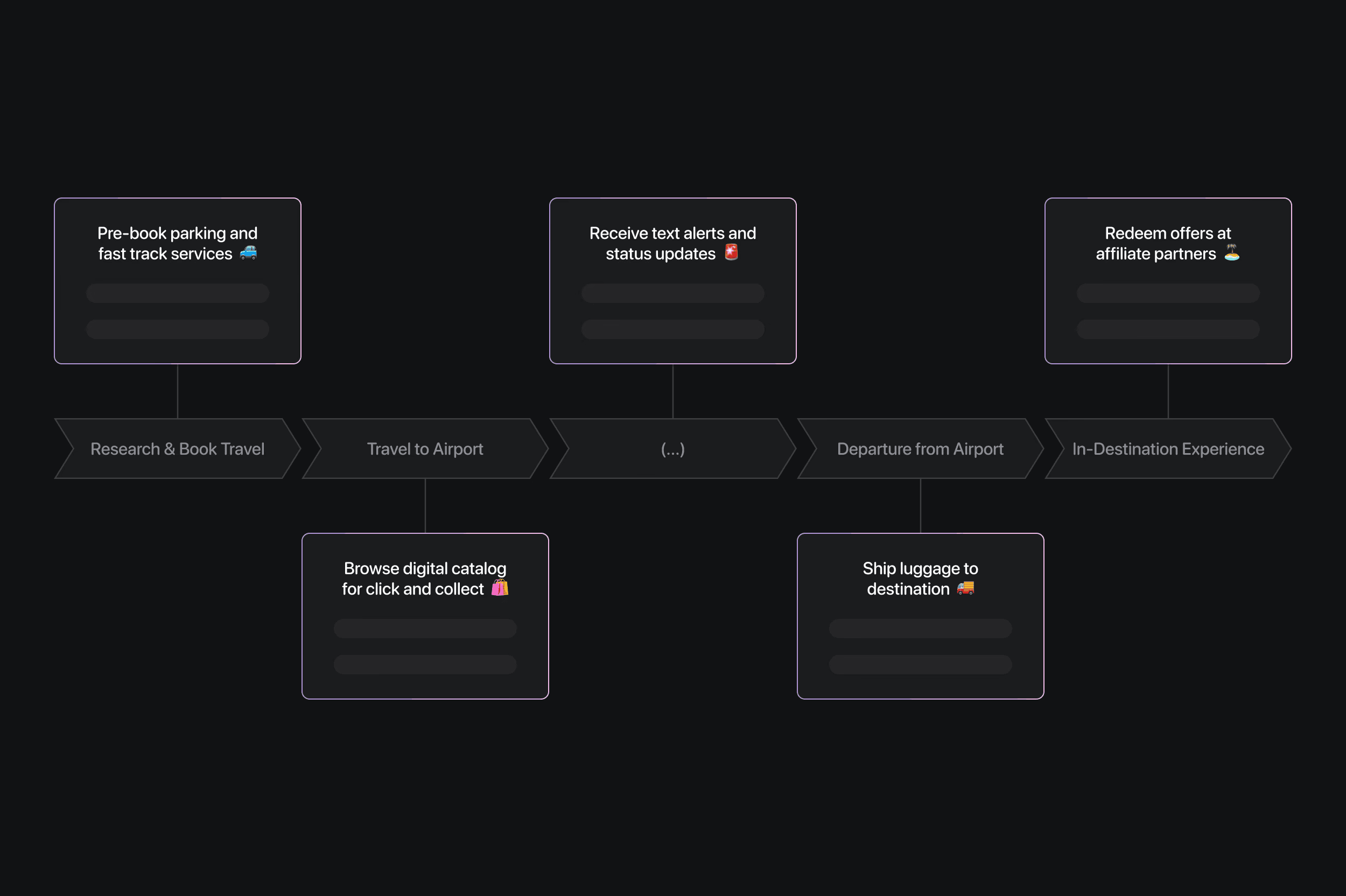
C. Scope and Align
After getting the green light on the target state experience, I pulled the items from the journey map into a weighted model that scored each opportunity by its desirability, feasibility, and viability. I used these scores to spot quick wins and flag features that needed further discussion before moving into implementation. The result was a fully prioritized, multi-year roadmap that organized initiatives into short-, medium-, and long-term efforts, aligning the client on what to roll out immediately (like click-and-collect in-terminal), and what to plan for over time (like baggage delivery to home).
D. Document
At this point, we had defined the "what" of the eCommerce strategy, but not quite the "how." To bridge that gap and bring the target state experience to life, I partnered with my Functional Lead to run working sessions with the client’s technical teams. These conversations were part knowledge-sharing, part discovery, aimed at identifying what would be required for core capabilities like product catalog management, digital storefronts, and payments.
In parallel, I also assessed potential tech stacks that could serve as the backbone of the platform, evaluating options like Shopify, Mirakl, and Salesforce for their buyer-facing features for eCommerce and seller-facing features for marketplace management.

Our work in this phase ultimately fed into a Business Requirements Document (BRD) that became a key reference point for the client as they evaluated software vendors and moved into more detailed implementation planning.
My Impact
Overall, this project consolidated the client's revenue streams and business objectives into a single, unified direction—laying the groundwork for a product expected to generate $XXXM in non-aeronautical revenue over the next decade.
To recap my contributions:
Researched and profiled 15 leading eCommerce experiences, capturing the nuances of 80+ on-site and off-site revenue streams, including their digital channels, buyer journeys, and fulfillment models.
Defined the platform's vision statement, business case, and value proposition, distilling 70+ features into a prioritized roadmap across three horizons.
Published 150+ specs (user stories, requirements, and business rules) across nine capability areas to clarify the platform's configuration, supporting technologies, and implementation plan.
III. Reflections & Takeaways
Key Learnings
Generating Momentum: One of the core skills I learned on this engagement was how to summarize large amounts of unstructured research into actionable insights and turn it into something that sparked meaningful discussion, while inspiring new ideas.
Thinking, Fast and Slow: Throughout the project, I encountered moments that required broad, expansive thinking, such as brainstorming quality-of-life improvements that I would personally enjoy at the airport. In contrast, writing user stories and business rules required a more nuanced approach. I learned how to recognize and leverage the appropriate thought process, whether fast and creative or slow and methodical, depending on the task at hand.
Being Less Precious About the Details: For the more challenging elements of the requirements stream (e.g., defining rules for user access management, unified cart, and invoicing), I had less certainty about the work I produced. To ensure I was aligned with my team's expectations, I scheduled more frequent review cycles and focused less on perfecting everything at once.
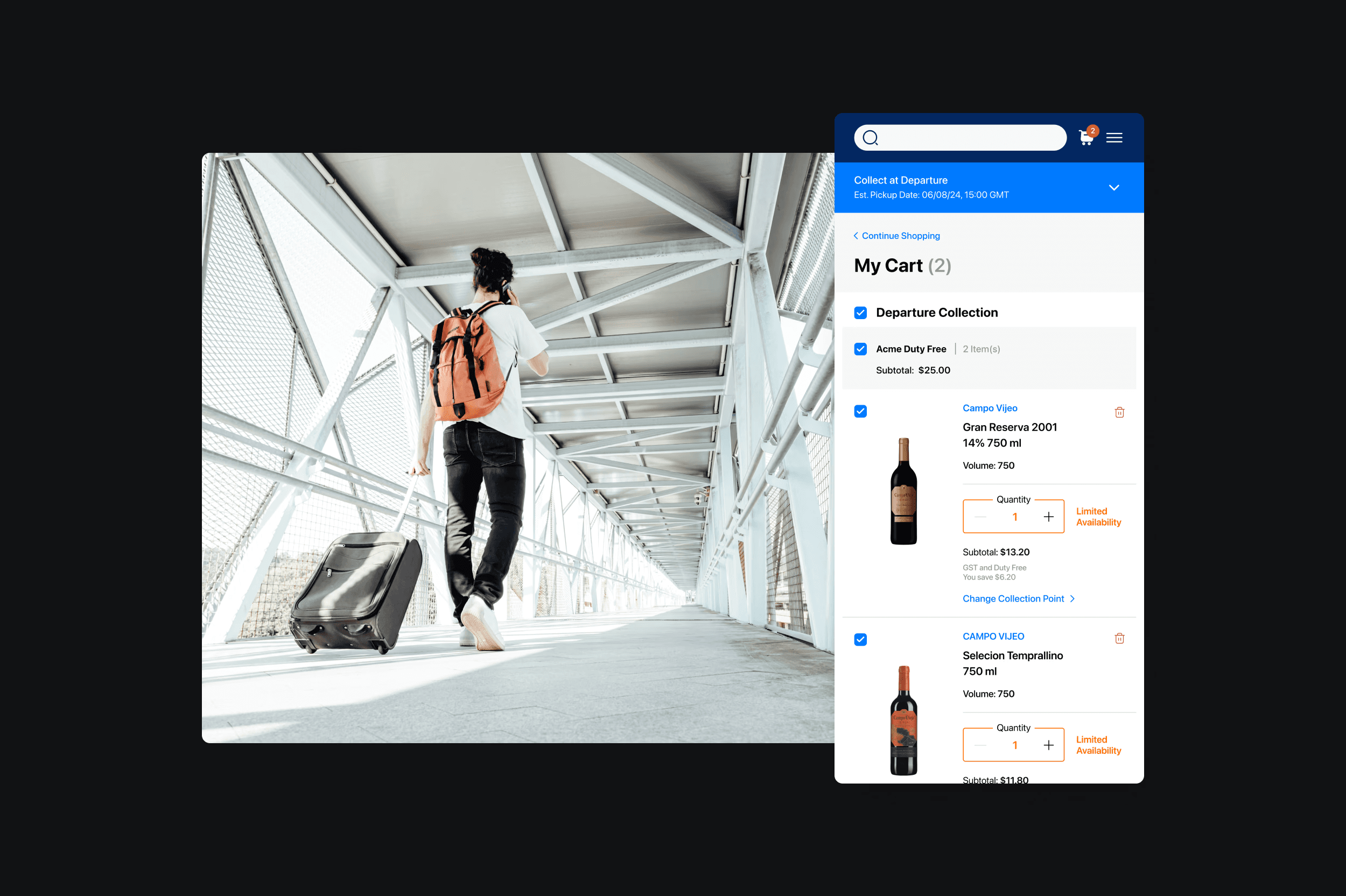
Conclusion
As one of the first strategy engagements in my portfolio, this project taught me how to develop compelling narratives and think critically about what enables world-class experiences. It also gave me front-row seats for observing how leadership teams craft a 0-to-1 vision at scale.
This form of consulting, otherwise known as Customer Experience (CX) Design, operates at a higher level of abstraction than User Experience (UX) Design. If you are interested in seeing a more hands-on example of my creative work, check out my UBDI case study here.

Discover more
